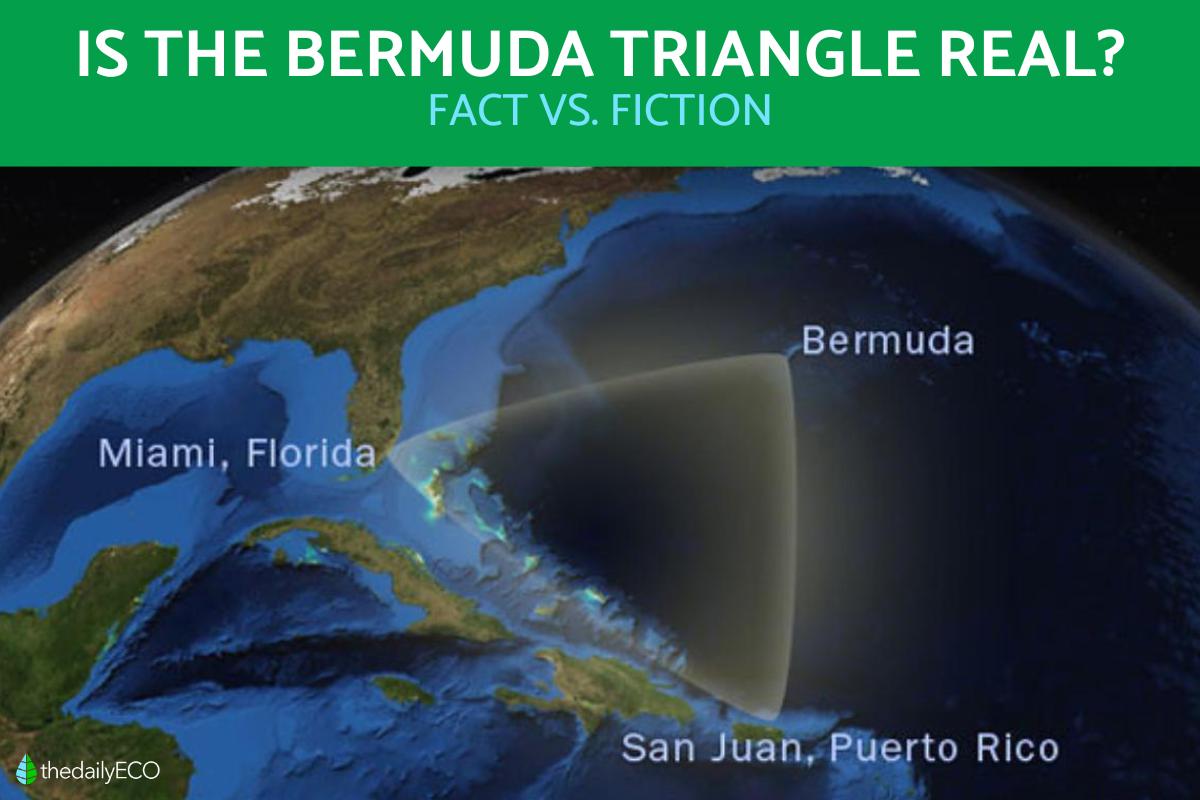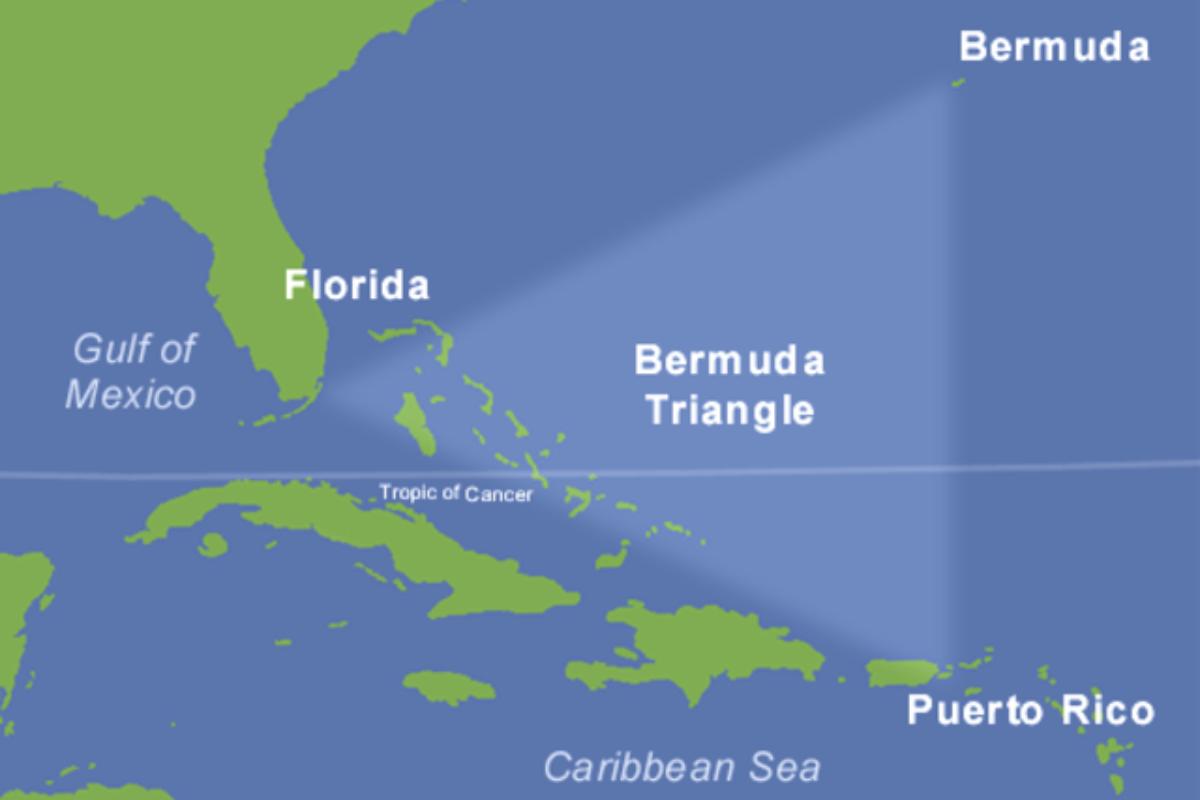Is the Bermuda Triangle Real?


The Bermuda Triangle is a real geographical place, located in the Atlantic Ocean. It is an area surrounding certain delineated points which extend from the island nation of Bermuda to the USA and Puerto Rico. When asking whether the Bermuda Triangle is real, it is most likely due to the mysterious stories which have given this area its reputation. This reputation is one that claims there has been an inordinate amount of disappearances of manned craft such as ships and planes. Explanations for such disappearances have included everything from paranormal activity to the existence of the lost city of Atlantis. thedailyECO examines such theories by asking is the Bermuda Triangle real?
What is the Bermuda Triangle?
Also known as the Devil's Triangle, the Bermuda Triangle is a triangular-shaped area in the Atlantic Ocean measuring between 1,600 and 1,800 kilometers on each side. This means it covers an area of approximately 1.1 million km². It is located off the southeastern coast of the United States on the American continent and has the reputation of being one of the most mysterious places on planet Earth.
The Bermuda Triangle's reputation is due to the belief that a large number of ship and aircraft disappearances have been recorded over the years. Many of these disappearances have been reported, but others have been lost under unexplained circumstances. With a lack of provable explanation, many have allowed their imagination to create their own reasons for these disappearances. Some of these explanations push the boundaries of possibility.

Where is the Bermuda Triangle?
As its name suggests, the Bermuda Triangle covers a range of ocean that is triangular in shape. It stretches from the Bermuda Islands in the north to Florida in the south in the United States. To the east it reaches a point passing through the Bahamas to beyond Puerto Rico, at about 40 degrees west longitude. It then returns towards Bermuda to complete the triangle. By connecting these imaginary points the famous triangle is formed.
When considering whether the Bermuda Triangle is real, we must remember that it is a hypothetical region. We can place any three points on a map and call the area contained within them a 'triangle'. In this way, the actual region described as the Bermuda Triangle is somewhat arbitrary.
How deep is the Bermuda Triangle?
The Bermuda Triangle region is characterized by deep underwater canyons and rugged topography on the seabed. These can influence ocean currents and the formation of sudden storms. In addition, the area is located in a zone where different ocean currents converge, such as the Gulf Stream. This is an area in which hurricanes, cyclones, large waves and other meteorological phenomena can be produced.
Since the area covered is so large, there are various ocean depths contained within it. The shallow areas are those near the coastlines of the US and Bermuda itself. These areas are part of the continental shelf and may be as little as 200 ft (60 m) depth. The Devil's Triangle also contains the deep ocean. The deepest of which is the deepest part of the Atlantic Ocean. This is known as the Puerto Rico Trench which can reach depths of 27,500 ft (8,400 m).
If you want to learn more about the life which can survive at such ocean depths, take a look at our article detailing the animals of the Mariana Trench.

Is the Bermuda Triangle real?
Various stories have been told about disappearances of manned craft in the Bermuda Triangle. One story which has had a wide impact and influenced its reputation is the story of a group of five US Navy airplanes that disappeared on 5th December 1945 after traveling from a naval base in Fort Lauderdale. One of the largest land-sea searches ever undertaken was carried out in order to find them, but with no success.
Similar stories of passenger planes, cargo ships and other craft have been reported missing without explanation. These include the 129-metre-long cargo ship known as the Marine Sulphur Queen. Another is the cyclops, a large boat which contained 309 passengers on board.
However, it is important to remember that the Bermuda Triangle is located in one of the busiest shipping routes in the world. Thousands of ships and aircraft navigate and fly through the area each year. It is statistically likely that there are higher numbers of accidents and disappearances, similar to incident rates in other heavily trafficked areas. In fact, there is no solid evidence to support that an abnormal number of disappearances have occurred in the Devil's Triangle.
What is really happening in the Bermuda Triangle?
Since some of the disappearances have been unexplained, various conspiracy theories have evolved over time. These have been bolstered by reports by various journalists who have sensationalized these theories without paying due attention to the facts or alternative explanations. Instead of UFOs, black holes or the lost city of Atlantis, some more reasonable explanations for disappearances in the Bermuda Triangle include the following:
- Adverse weather: the region is known for its changeable weather conditions, including thunderstorms, hurricanes and unpredictable waves. These conditions can contribute to the loss of ships and aircraft. Learn more about how hurricanes are formed with our related article.
- Mechanical failures: mechanical failures on ships and aircraft are common and can result in fatal accidents, especially under adverse weather conditions.
- Navigation errors: these can lead to ships and aircraft becoming lost or deviating from their intended course, especially if they encounter adverse weather conditions.
- Blue holes: on the seabed of the Bahamas are deep underwater caves formed thousands of years ago, commonly known as ‘blue holes’. These structures create powerful currents capable of diverting even large ships from their course. One of the deepest blue holes in the world, the Sansha Yongle at 300 meters depth. Although these holes are not exclusive to the Bermuda Triangle, they are also found in other places such as the Yucatan Peninsula in Mexico and the Lighthouse Reef in Belize.
- Methane explosions: a more recent theory suggests that the waters in the area contain high concentrations of methane gas. Research in 2017 in Norway revealed deep craters with large amounts of the gas. In the Bermuda Triangle, it is thought that the heat of tropical waters and ships could trigger methane explosions, generating strong sea currents and causing ships to suddenly sink.
Now you know about the possible reasons for disappearances in the Bermuda Triangle, you may want to check out our related article which asks where do the Pacific and Atlantic Oceans mix?
If you want to read similar articles to Is the Bermuda Triangle Real?, we recommend you visit our Facts about nature category.
- Berlitz, C., & Cayuela, J. (1975). The Bermuda Triangle. Pomaire.







